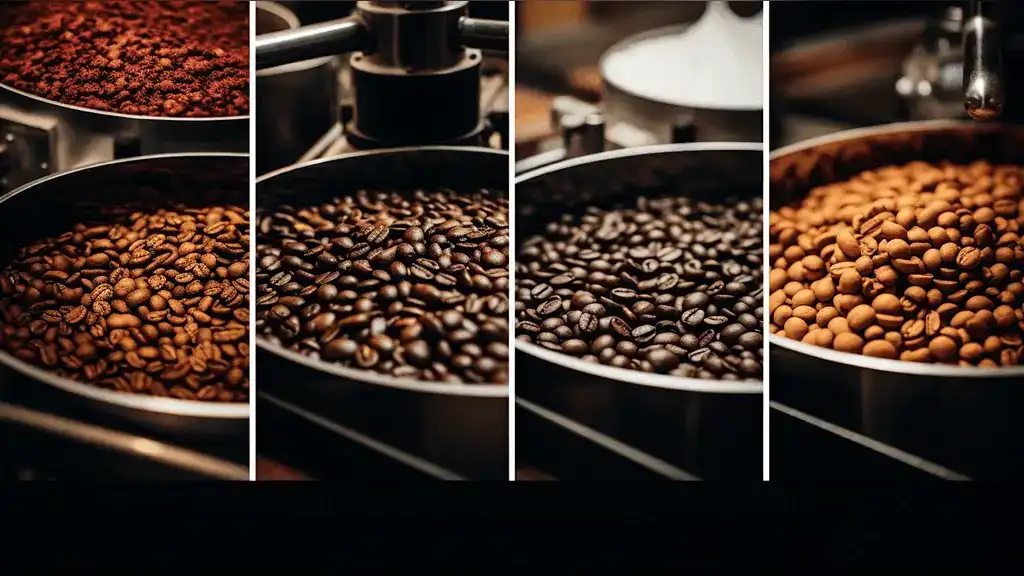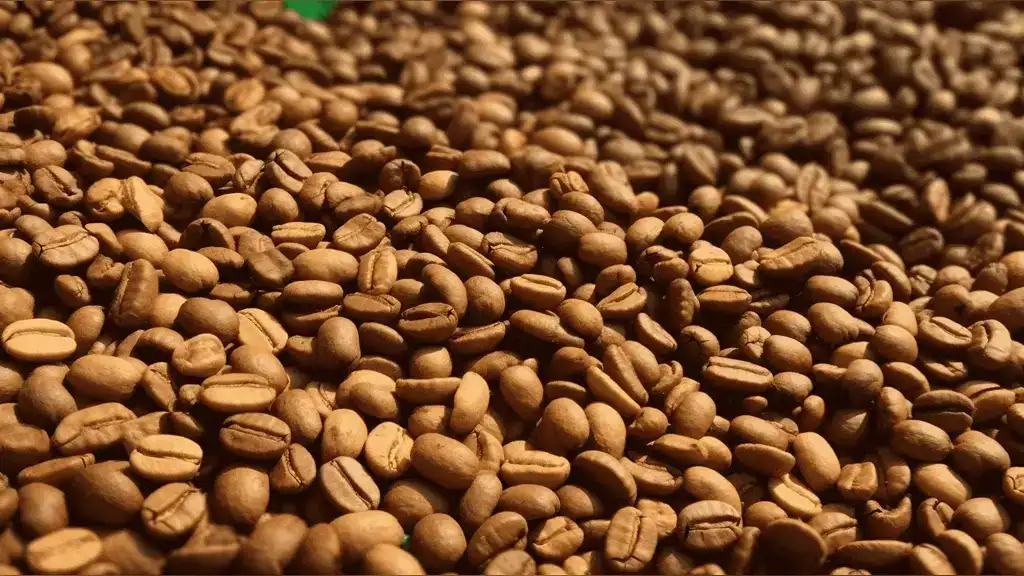No matter how you like your coffee, whether it’s black, with cream and sugar, or an espresso, there’s no denying that coffee is a worldwide favorite drink.
While the many different ways to drink coffee are endlessly debated, far less attention is paid to the various methods and techniques for processing coffee beans.
From wet-processing to natural processing to dry-processing, each method yields unique flavor profiles for the roasters and consumers to enjoy. Here we’ll take a deeper look at different processing methods and how they affect the taste of coffee.
What are the different coffee processing methods and techniques?
Coffee processing is the method by which the coffee cherries are cleaned, sorted, and prepared for export.
The methods of processing coffee are: washed (wet), natural (dry), giling basah, and carbonic maceration. Each method produces a different flavor profile and cup character.
As you delve into the intricate world of coffee processing, have you ever wondered about the unique methods employed in Puerto Rico? Explore the Roasting Techniques: Puerto Rico Coffee and savor the distinct flavors that set it apart.
Journey through the diverse world of coffee processing. From wet to dry methods, each technique crafts a unique flavor. But have you explored the secrets of honey coffee processing? Dive in and taste the difference.
washed coffee processing method
The washed processing method is popular because it results in delicious coffee with a great taste profile. It also produces coffees that boast a light body and a bright clean cup.
The method is performed by cutting and washing off the cherry from the coffee bean and also removing as much mucilage as possible. The beans are then dried without the cherry.
Ever wondered how the washed method enhances the taste of your brew? Discover the intricacies of the Wet Processing: Washed Coffee Guide and experience the refined flavors it brings to your cup!
fully washed coffee
Fully washed coffee is the most common type of fermentation. The farmers remove the fruit before drying the coffee beans.
This process is done using a type of thresher called a “depulper”. The ripe coffee cherries will sink in water, whereas the poor ones will float.
The coffee beans ferment in water tanks and are then dried in the sun. They are then cleaned before being roasted.
Semi Washed Coffee processing
Semi Washed Coffee is a type of coffee processing where the coffee beans are only partially washed.
This means that after the coffee cherries are picked, they are sorted and then only partially washed with water.
The coffee beans still have some fruit or “mucilage” clinging to them when they are dried, which gives the coffee a unique flavor profile.
The art of coffee transcends beyond just brewing; it’s a meticulous process from cherry to cup. Ever wondered how beans are processed to give them distinct flavors? From wet-processing to dry-processing, each technique crafts a unique taste profile. Dive deeper and uncover the Premium Coffee Roasting Techniques that elevate your coffee experience to luxury.
Want to master the art of coffee processing? Dive into our Brewing Ethiopian Coffee Guide and elevate your coffee experience from bean to brew.
giling basah coffee process (Wet Hull)
Giling Basah coffee process is a traditional coffee processing method popular in Indonesia in which coffee cherries are hulled and then polished using a grinding stone.
The coffee beans are then separated from the husks and placed in a fermentation tank where they undergo an initial fermentation process.
After fermentation, the coffee beans are washed and dried before being roasted.
Ready to explore the art of coffee processing? Delve into our comprehensive guide on natural coffee processing techniques. Discover the secrets behind crafting the perfect cup from bean to brew. Uncover the intricacies with every sip. Check out our guide at Natural Coffee Processing Guide!
What equipment do you need for washed coffee processing?
In order to wash coffee, you need a few key pieces of equipment:
- First, you’ll need a washing tank. This can be made out of concrete, metal, or plastic, and should be large enough to hold all of the coffee you plan to wash.
- Next, you’ll need a way to filter the coffee after it’s been washed. This can be done with a simple cloth filter or a more sophisticated mechanical filter.
- Finally, you’ll need a drying rack or other surface on which to dry the coffee.
With these three pieces of equipment, you’ll be able to wash coffee effectively and efficiently. Make sure to clean all of your equipment thoroughly after each use to avoid any contamination.
natural coffee process (dry processe)
Natural coffee is coffee that has been processed without the use of chemicals. The dry process, also called natural process, is the most common way to process coffee, and it produces some of the most popular coffee brands in the world.
The coffee beans are harvested and then sun-dried for several weeks before they are hulled and sorted.
After the coffee beans are hulled, they are typically sorted by size and weight. The coffee beans are then roasted to bring out their flavor. Finally, they are ground and brewed.
Natural coffee is often more expensive than conventional coffee, but many people feel that it is worth the extra cost.
What equipment do you need for dry coffee processing?
In order to dry coffee, you will need a few key pieces of equipment. First, you will need a drying rack or other surface on which to dry the coffee. Next, you will need a fan to circulate the air and speed up the drying process. Finally, you will need a storage container in which to store the dried coffee beans.
carbonic maceration coffee process
carbonic maceration coffee process is a coffee processing technique that results in coffee with fruity and bright flavors.
The technique involves exposing coffee beans to carbon dioxide, which breaks down the bean’s cell walls and releases flavor compounds. The coffee beans are then separated from the cherries and dried.
Carbonic maceration coffee is often used as a blend component to add brightness and fruitiness to a coffee.
what is honey processing in coffee? (Pulped natural)
Honey processing is a coffee processing method where the coffee cherries are sorted and then pulped, but only some of the fruit flesh is removed before it is dried.
This results in a coffee with sweeter, more caramelly flavors. coffees that have undergone honey processing tend to have less acidity than fully washed coffees.
What is parchment coffee?
Parchment coffee is coffee that has been dried with its parchment still intact. This method of coffee processing is most common in Central America and Ethiopia.
The parchment coffee process begins with the coffee cherries being picked and then sorted. The cherries are then de-pulped and fermented. After fermentation, the coffee beans are washed and then dried.
Once the coffee beans are dried, they are hulled and the parchment is removed. The coffee beans are then sorted and graded.
what are decaf coffee process methods?
There are four main ways to decaffeinate coffee: water process, solvent process, Swiss water process, and carbon dioxide process.
- Water Process: Also called the direct method, hot water is added to the green beans to extract the caffeine.
- Solvent Process: A solvent, such as methylene chloride or ethyl acetate, is added to the green beans to extract the caffeine.
- Swiss Water Process: Green coffee beans are soaked in hot water to extract the caffeine, and then the caffeine-laden water is passed through a charcoal filter to remove the caffeine.
- Carbon Dioxide Process: Carbon dioxide is used to extract the caffeine from green coffee beans.
the coffee beans fermentation process
Coffee beans fermentation process is a key step in the production of coffee.
The process is performed by adding water to coffee beans and allowing them to sit for a while, typically 12-24 hours. This allows the beans to absorb moisture and begin the process of breaking down sugars into alcohols and acids.
The fermentation process is important as it helps to develop the coffee’s flavor and aroma. It also plays a role in determining the final color of the coffee beans.
what is the best arabica coffee beans process method?
The best way to produce high quality Arabica coffee beans is through the wet process.
In this method:
- The coffee cherries are first sorted and then pulped in order to remove the fruit from the bean.
- The beans are then soaked in water for an extended period of time, which allows them to absorb water and swell.
- Next, they are washed in order to remove any impurities.
- finally. they are dried.
coffee blending process methods and techniques
There are two main methods for blending coffee – the dry method and the wet method.
The dry method is the more traditional of the two and involves mixing different types of roasted coffee beans before grinding them together. This method allows each type of bean to retain its flavor profile, which can result in a more complex final blend.
The wet method, on the other hand, involves mixing green coffee beans that have not yet been roasted. This allows for a more uniform flavor profile as all of the beans are essentially starting from the same point.
However, this also means that the final blend can be more susceptible to inconsistencies if any of the beans are not of uniform quality.
What are the modern technologies used in coffee processing methods?
The coffee processing methods have changed and evolved over time, with new technologies being developed and adopted to improve the quality of the final product. The latest modern technology used in coffee processing methods is the use of lasers.
Lasers are used to remove defects from coffee beans, such as surface blemishes. This results in a more uniform bean, which leads to a better tasting cup of coffee. Lasers are also used to sort beans by color and size.
Another modern technology used in coffee processing is the use of robotics. Robotics can be used for tasks such as picking coffee cherries and sorting beans. This helps to improve the efficiency of the process and reduces the chances of human error.
Coffee processing methods have come a long way since the days of traditional methods. The latest modern technologies are making it possible to produce a higher quality product with less waste.
roasting coffee process
The roasting process is what gives coffee beans their different colors.
The beans are first heated until they turn a light brown, then they are cooled and ground into a fine powder.
The longer the beans are roasted, the darker their color will be. Darker beans have a stronger flavor and more caffeine than lighter beans.






